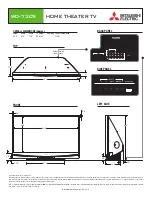
Manual 7SJ45
Installation and commissioning
C53000-K1174-C001-7
62
Standard test
A load current of at least 80% the rated current is necessary to
activate the self-monitoring function of the device with single-
phase supply. The "RUN" LED must be on.
A flashing LED indicates a problem of the device settings.
If the LED "RUN" flashes green, a setting has been made but not
yet applied. Press the "ENTER" key to activate the new settings.
If the LED "ERROR" flashes red, there is an inconstency of the
Basic Settings Block. Please correct the setting.
If none of the LEDs is lit, check the connection of the transformer
circuits.
Tripping test
This test is used to check the overall function of the device,
including the trip circuits. Connect the device to a secondary test
equipment for protective devices. Observe the safety
instructions!
When testing the device with secondary test equipment, make
sure that no other measurement quantities are connected and
that the testing unit is supplied by load-independent currents.
The trip test should be performed with the circuit breaker
connected, and with the setting values that are specified for
operation.
If the trip indication is activated, press the Reset key to reset it.
Using the test equipment, apply a test current below the set
tripping threshold. The device must not trip. Apply now a test
current above the set tripping threshold. The trip actuator or the
circuit breaker must be actuated.
DANGER!
The output terminals of the current transformers must be short-
circuited on the transformers themselves before the power
supply lines to the device are disconnected.
Where a test switch is available that short-circuits automatically the
output lines of the current transformer, it will be sufficient to set it to
"Test" position, provided that the short-circuiters have been checked
in the first place.
Caution!
This test trips the circuit breaker. Tests with currents that exceed more
than twice the rated device current cause an overload of the input
circuits and may only be performed for a short time (see 2.11).
Afterwards the device has to cool off!












































